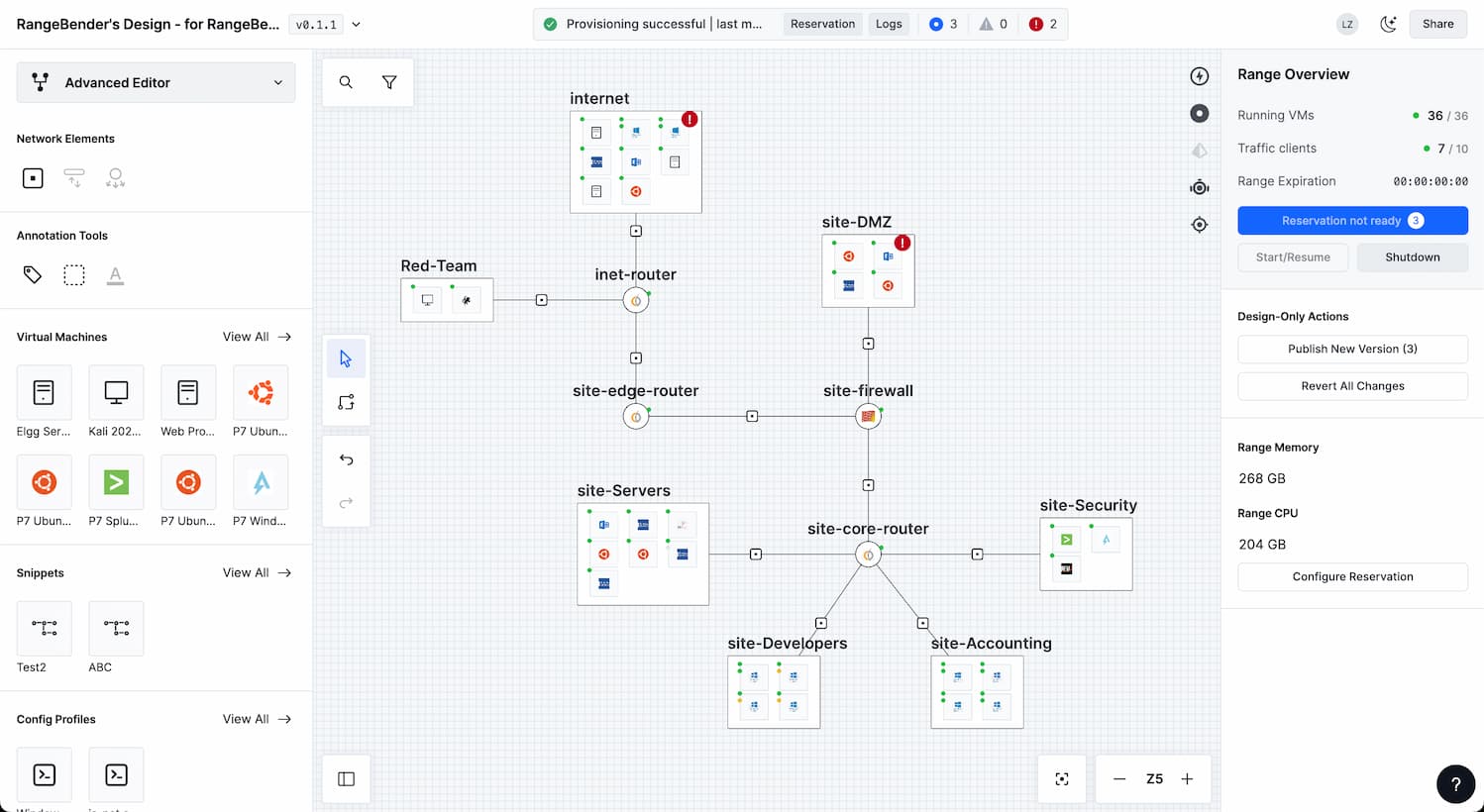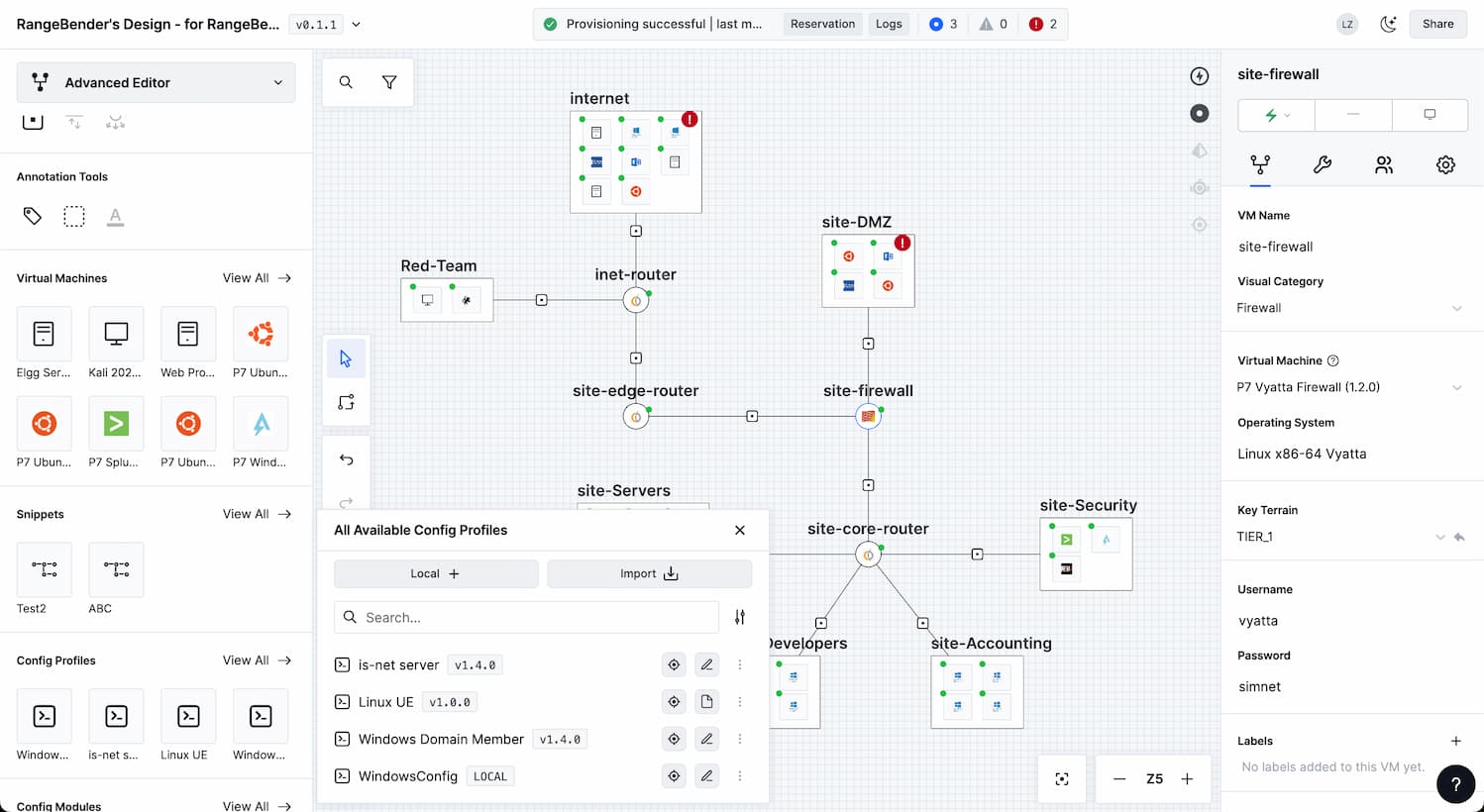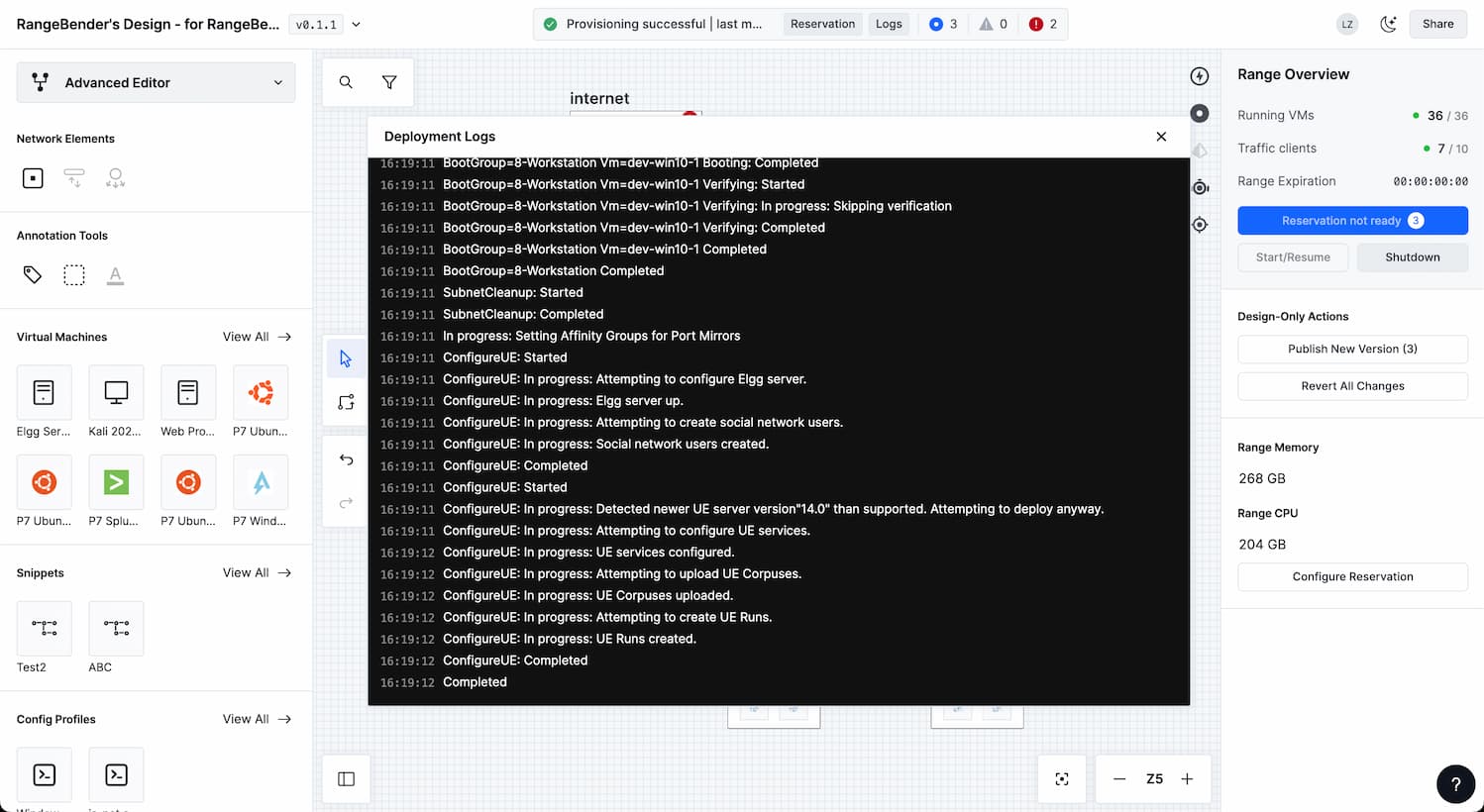Terrain
Terrain is a powerful, canvas-based editor for network design. Designed and implemented from the ground up for a corporate client that simulates network infrastructure for global governments and Fortune 500's. Think Figma, but for cloud infrastructure and corporate networks.
Tech Stack
Preview
Rich Editing Experience
A dedicated canvas editor allows the user to freely design and edit infrastructure assets.

Live VM Configuration
VM configuration is seamlessly linked between the canvas and the sidebar panels with rich information overlays.

Synchronization with External Services
Live visual deployments allow users to sync with external infrastructure providers and deployment targets once ready to publish.

Full Exhibition
As Terrain is a private product, further pictures and architectural discussion are included at a password-protected page here. Please contact me for the password.
My Responsibilities
My specific responsibilities for Terrain were two-fold. Most significantly, I was the lead architect and developer of the real-time canvas based editor. The editor allowed users to design and edit networks with a familiar and intuitive canvas interface.
At the onset of the project, I performed an exhaustive search of potentially available "off-the-shelf" libraries that might suit our requirements. It became apparent to me that nothing would provide the low-level control we required to implement the desired feature set, so in the end I ended up developing our own in-house framework from scratch with the help of the graphics library Pixi.js.
Our in-house framework required a greater upfront investment of developer time at the beginning of the project. However, after a few months, the velocity enabled by our bespoke and tuned set of tools allowed us to rapidly develop new features, onboard new engineers, and maintain the requisite high performance that would have been a challenge with standardized tools. I was adamant that we maintain 60fps during client interaction with the editor, a benchmark that we were able to consistently meet given our tuned implementation.
I was additionally responsible for overseeing all data migrations and schema design for our backing database (PostgreSQL). This work included careful interaction with some of our middleware and caching architecture to enable real-time collaboration using CRDT's.
End-users gave universal praise for Terrain and described it as "smooth", "intuitive", and as a "step-function change" in cloud infrastructure and network administration.